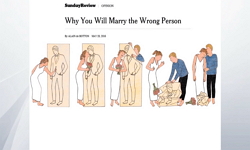First appeared in 1717 during the reign of Peter the Great, the balls flourished in both Petersburg first and then Moscow. After the appearance of the balls, the salons as an architectural structure and composition at first became the meeting place la...
http://chineseinput.net/에서 pinyin(병음)방식으로 중국어를 변환할 수 있습니다.
변환된 중국어를 복사하여 사용하시면 됩니다.
- 中文 을 입력하시려면 zhongwen을 입력하시고 space를누르시면됩니다.
- 北京 을 입력하시려면 beijing을 입력하시고 space를 누르시면 됩니다.

19세기 러시아 문학의 세속적 기호(1): 그리보예도프, 푸시킨, 고골의 문학 속에 비친 무도회와 살롱 = Secular Sign in Russian Literature (1): The Scenes of Balls and Salons in the Works by Griboedov, Pushkin, and Gogol in the Early Nineteenth-Century Russian Literature
한글로보기https://www.riss.kr/link?id=A106294754
- 저자
- 발행기관
- 학술지명
- 권호사항
-
발행연도
2019
-
작성언어
-
-
주제어
러시아 무도회 ; 러시아 살롱 ; 러시아 세속 문화 ; 푸시킨 ; 고골 ; Russian Balls ; Russian Salons ; Russian Secular Culture ; Pushkin ; Gogol
-
KDC
700
-
등재정보
KCI등재
-
자료형태
학술저널
-
수록면
26-69(44쪽)
- DOI식별코드
- 제공처
-
0
상세조회 -
0
다운로드
부가정보
다국어 초록 (Multilingual Abstract)
First appeared in 1717 during the reign of Peter the Great, the balls flourished in both Petersburg first and then Moscow. After the appearance of the balls, the salons as an architectural structure and composition at first became the meeting place later for the nobility class, including some major noble madams and intellectuals, as well. The salons, which differ from the original model of French culture, were implanted in Russian soil to build intellectual discussion place and began to be depicted in the early 19<sup>th</sup> century Russian literature. In this paper the center of our focus will be at salons’ structural element, not a positive, creative, and productive connotations which they had achieved after the 1830s roughly. This is the general contour and image from the two important cultural elements. Yet, this paper draws upon the balls and salons in their historical background and literary representations in three writers and four texts in chronological order such as: Griboedov's play Woe from Wit (1825), Pushkin's Eugene Onegin (1833) and Negro of Peter the Great (1837), and Gogol's The Dead Souls (1842). From these various texts, the paper analyzes in what way the scenes of balls and salons are described in those texts, typical types of portrayals, and the reasons for those treatments in them. Through these examples, the paper argues that the balls and salons altogether are nothing but an explosive place for social criticism, corruptions, hypocrisy, desire for social success, and so on. Totally exotic and non-Russian style cultures, the balls and salons therefore are obstacle for social and spiritual maturity among intellectuals and enlightened young people at the time. More importantly, at the same time, the two newly implemented secular elements are negatively dealt with in most of Russian literature.54)
동일학술지(권/호) 다른 논문
-
- 한국외국어대학교(글로벌캠퍼스) 러시아연구소
- 최인선
- 2019
- KCI등재
-
러시아 극동지역의 산업구조 분석: 특화계수와 노동생산성 변화를 중심으로
- 한국외국어대학교(글로벌캠퍼스) 러시아연구소
- 염동호
- 2019
- KCI등재
-
- 한국외국어대학교(글로벌캠퍼스) 러시아연구소
- 윤새라
- 2019
- KCI등재
-
- 한국외국어대학교(글로벌캠퍼스) 러시아연구소
- 문준일
- 2019
- KCI등재




 KCI
KCI KISS
KISS




